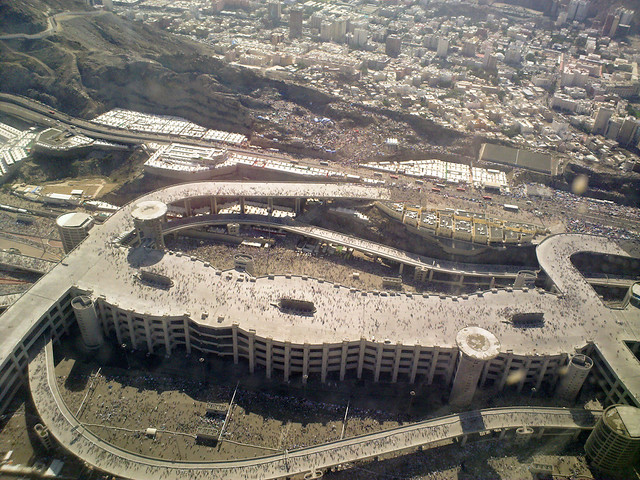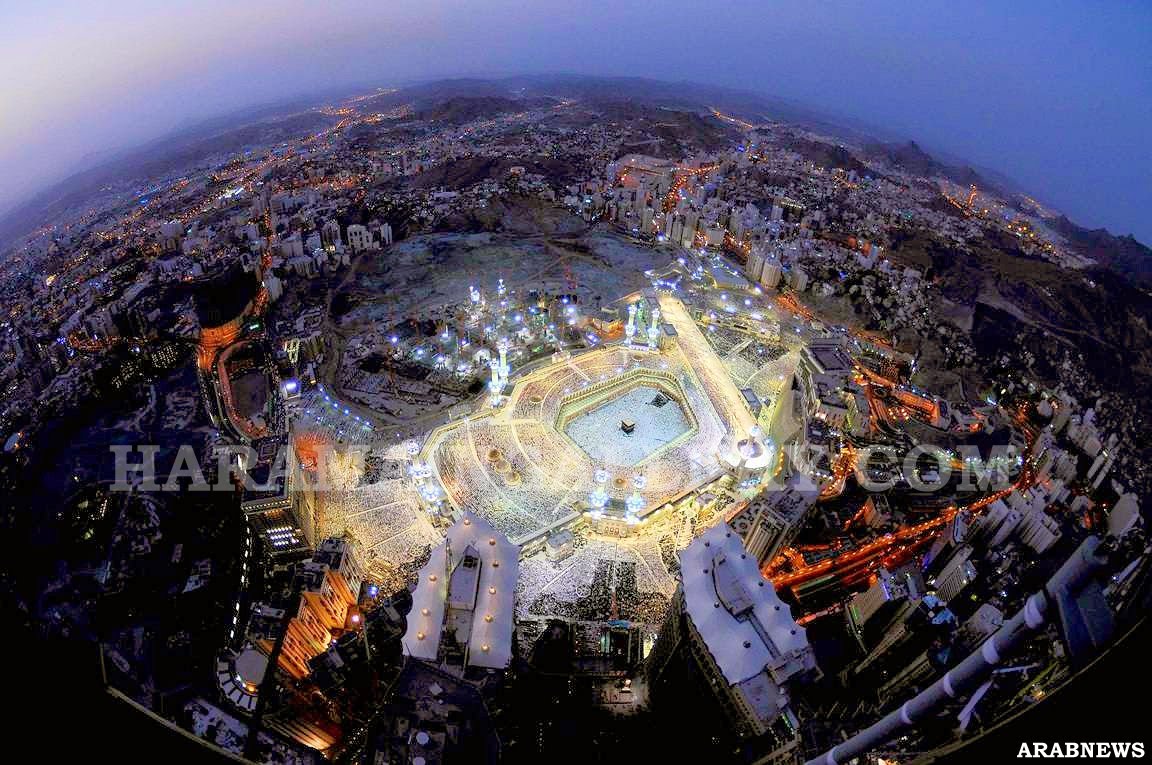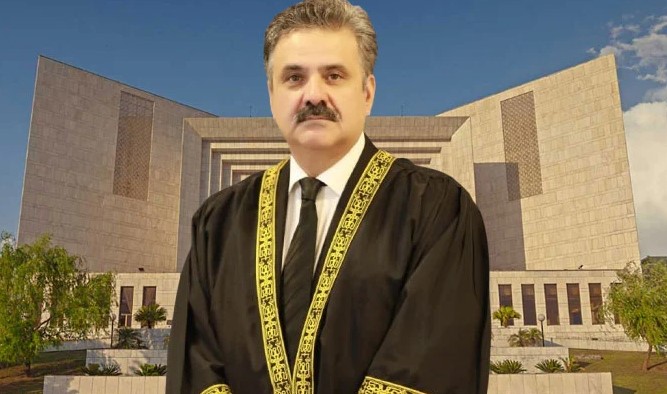karachi
MPA (400+ posts)
Fifth floor of Jamrat Bridge opens for Haj

JEDDAH: The fifth floor of the high tech Jamrat Bridge in Mina will be open to pilgrims this Haj season, the Ministry of Municipal and Rural Affairs said Saturday.
The opening of the fifth floor will facilitate the stoning ritual at Jamrat, said Habeeb Zainul Abideen, deputy minister for municipal and rural affairs.
Abideen was addressing a conference on medicine attended by 500 delegates. He described Haj as the largest congregation of people in the world and highlighted the Saudi governments efforts to avoid stampedes and other accidents during the annual event.
Abideen said the irresponsible behavior of some pilgrims causes problems not only for Saudi Haj managers, but also fellow Hajis. He urged all pilgrims to follow safety instructions.
There are 90 cameras around Jamrat to monitor the movement of pilgrims and prevent possible stampedes. These cameras will also enable Haj managers to assess how many pilgrims each floor of the bridge can hold.
We have also arranged for vehicles to carry pilgrims with special needs to help them perform the stoning ritual without any difficulty, he said.
Maj. Gen. Mansour Al-Turki, spokesman for the Interior Ministry, spoke about new plans for crowd management at Jamrat as well as in the mataf, the circling area around the Holy Kaaba where pilgrims perform tawaf, and the masaa, the running area between Safa and Marwa where Hajis perform saie.
Out of the 2.5 million people who come for Haj every year, 700,000 pilgrims walk to the holy sites, he said, adding that 75,000 buses and other vehicles are used to transport the other pilgrims.
The Haram Mosque in Makkah can hold 700,000 worshippers, while the mataf can hold 53,000 and the masaa 118,000.
Dr. Ziyad Maimish, assistant undersecretary at the Health Ministry for preventive medicine, said the ministry would mobilize about 17,000 doctors, nurses and paramedical staff and 39 mobile medical teams for Haj duty.
Mekkah Metro Marks A Green Hajj For Pilgrims

A high speed train (no!..low speed train) to Mecca in Saudi Arabia will cut down on carbon emissions during hajj this year, but its reach is limited.
Every year, around three million Muslims from across the world prepare for the spiritual journey of a lifetime. Many will have been saving up for the trip for years and will be prepared to travel thousands of miles to reach their destination: Mecca in Saudi Arabia to perform the hajj.
As one of the five pillars of Islam, every Muslim who has the financial and physical ability is encouraged to make the pilgrimage to Mecca which is Islams most holy site. The question is can this spiritual pilgrimage, which leaves behind a trail of waste and carbon emissions, really be transformed into something more green?
Progress Towards A Green Hajj
The concept of a Green Hajj has already been discussed here at GreenProphet following the UN-backed Muslim Seven Year Plan which announced plans to encourage Muslims to be more environmentally friendly. Although there was talk of printing Qurans on sustainably sourced paper, reducing energy consumption at mosques and places of worship, many were cynical as to whether these plans would ever materialize. However, this year for the first time ever, pilgrims will be able to reduce their carbon footprint during hajj by travelling between Meccas holy sites via a very green form of public transport- the train.
From this November 2010, the high speed train will be able to transport 130,000 passengers between the holy sites which will help reduce the number of vehicles on the roads and make hajj journeys more eco-friendly. Sadly, only pilgrims from Saudi Arabia and the Arab Gulf states will be able to purchase tickets and make full use of the trains this year. (My auntie and her family are going to hajj this year from the UK and I was going to ask her for a blow-by-blow account of using the metro but I guess that wont be happening.)
Reducing Congestion and Pollution
The Mekkah Metro, as its been dubbed, is only in the first stages and is operating at 33 percent of its total capacity. It will be fully operational by hajj season 2011 and will carry around 500,000 passengers by then at the rate of 72,000 passengers an hour in a single direction. By the final stage in 2012 the metro, which has elevated tracks to avoid busy roads, will be able to transport up to two million people. This rail network is expected to reduce traffic by approximately 30,000 cars- so not only will it reduce congestion but it will also cut the noxious emissions which cars release.
The introduction of the train network is clearly an important step towards making hajj more environmentally-friendly but there is still a lot more to be done. It is estimated that 100 million plastic bottles are left behind every year after the hajj season and food packaging is still a big issue that needs to be tackled alongside the carbon emissions of the travellers. Although the flora and fauna around the two holy sites in Saudi Arabia are protected by a hima, a middle-eastern form of environmental protection, more is needed before a truly Green Hajj is realized.
Every year, around three million Muslims from across the world prepare for the spiritual journey of a lifetime. Many will have been saving up for the trip for years and will be prepared to travel thousands of miles to reach their destination: Mecca in Saudi Arabia to perform the hajj.
As one of the five pillars of Islam, every Muslim who has the financial and physical ability is encouraged to make the pilgrimage to Mecca which is Islams most holy site. The question is can this spiritual pilgrimage, which leaves behind a trail of waste and carbon emissions, really be transformed into something more green?
Progress Towards A Green Hajj
The concept of a Green Hajj has already been discussed here at GreenProphet following the UN-backed Muslim Seven Year Plan which announced plans to encourage Muslims to be more environmentally friendly. Although there was talk of printing Qurans on sustainably sourced paper, reducing energy consumption at mosques and places of worship, many were cynical as to whether these plans would ever materialize. However, this year for the first time ever, pilgrims will be able to reduce their carbon footprint during hajj by travelling between Meccas holy sites via a very green form of public transport- the train.
From this November 2010, the high speed train will be able to transport 130,000 passengers between the holy sites which will help reduce the number of vehicles on the roads and make hajj journeys more eco-friendly. Sadly, only pilgrims from Saudi Arabia and the Arab Gulf states will be able to purchase tickets and make full use of the trains this year. (My auntie and her family are going to hajj this year from the UK and I was going to ask her for a blow-by-blow account of using the metro but I guess that wont be happening.)
Reducing Congestion and Pollution
The Mekkah Metro, as its been dubbed, is only in the first stages and is operating at 33 percent of its total capacity. It will be fully operational by hajj season 2011 and will carry around 500,000 passengers by then at the rate of 72,000 passengers an hour in a single direction. By the final stage in 2012 the metro, which has elevated tracks to avoid busy roads, will be able to transport up to two million people. This rail network is expected to reduce traffic by approximately 30,000 cars- so not only will it reduce congestion but it will also cut the noxious emissions which cars release.
The introduction of the train network is clearly an important step towards making hajj more environmentally-friendly but there is still a lot more to be done. It is estimated that 100 million plastic bottles are left behind every year after the hajj season and food packaging is still a big issue that needs to be tackled alongside the carbon emissions of the travellers. Although the flora and fauna around the two holy sites in Saudi Arabia are protected by a hima, a middle-eastern form of environmental protection, more is needed before a truly Green Hajj is realized.





































